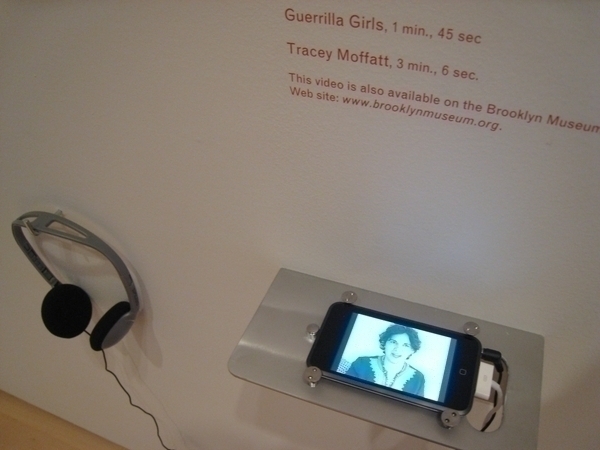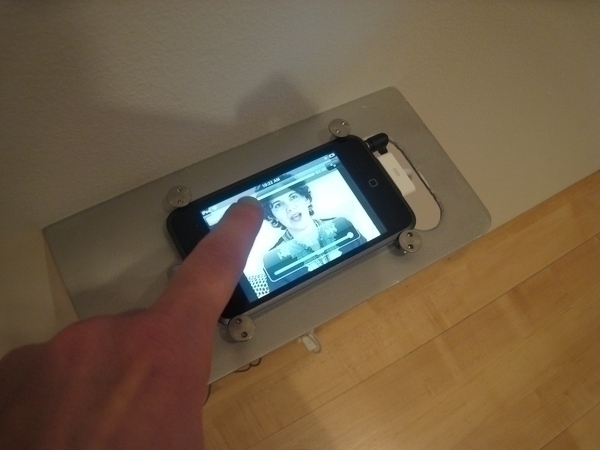iPod Touch for use in the Gallery

So, the idea was pretty simple: the curators of Burning Down the House: Building a Feminist Art Collection wanted our visitors to hear directly from the artists in the exhibition, so we set out to create a series of videos that would play on iPod Touches in the gallery. As most people reading this blog already know, we don’t have a lot of resources here (read: staff time) to produce video, so we needed a way to do this project without putting too much of a strain on the department. We purchased a bunch of Flip Video cameras and the curators set out to film short interviews with the artists—check these out. We were impressed with the quality of these cams, so if you are looking for a cheap and easy way shoot some video this may be a good answer for your needs—worked for us!
The iPod Touch part of the project turned out to be a bigger problem. Why iPods? Well, they are cheap and small. We are all conscious around here that too much technology can compete with the work on view and the Touches were a good fit. Small enough to be installed in a way that does not overpower the visitor experience, yet large enough screens to watch the movies and built-in touch screens to navigate a list of movie files.

iPod Touch installed in Burning Down the House seen here with Marriage Bed, 2001. Edwina Sandys (British, b. 1938). Mixed media. Brooklyn Museum, Gift of Henry Luce III and Leila Hadley Luce, 2004.29.
We were hoping to find a Museum Mode that would work for the Touch, but it doesn’t exist yet. I guess this makes sense, it took Apple a really long time to release Museum Mode the first time around and it looks like we may be waiting just as long for a version to run on this newer hardware. Best answer we could find was to use the API to create an app, but that doesn’t work either—the API won’t let you lock down the device in a kiosk-like way. No Museum Mode? No API? What’s a museum tech department to do? Our solution is not perfect, but it’s not difficult to accomplish and if you drop us a line we can point you to some existing documentation on the web that helped us.

Now that we’ve got them in the gallery, we will be watching usability closely. Apple is pretty good about providing easy-to-use interfaces, but it remains to be seen how it will translate in a situation like this one. We’ve got a fabulous team of security guards to help get feedback. I’ll be doing some of my own observation in the galleries and will report back with our findings.

Shelley Bernstein is the former Vice Director of Digital Engagement & Technology at the Brooklyn Museum where she spearheaded digital projects with public participation at their center. In the most recent example—ASK Brooklyn Museum—visitors ask questions using their mobile devices and experts answer in real time. She organized three award-winning projects—Click! A Crowd-Curated Exhibition, Split Second: Indian Paintings, GO: a community-curated open studio project—which enabled the public to participate in the exhibition process.
Shelley was named one of the 40 Under 40 in Crain's New York Business and her work on the Museum's digital strategy has been featured in the New York Times.
In 2016, Shelley joined the staff at the Barnes Foundation as the Deputy Director of Digital Initiatives and Chief Experience Officer.
